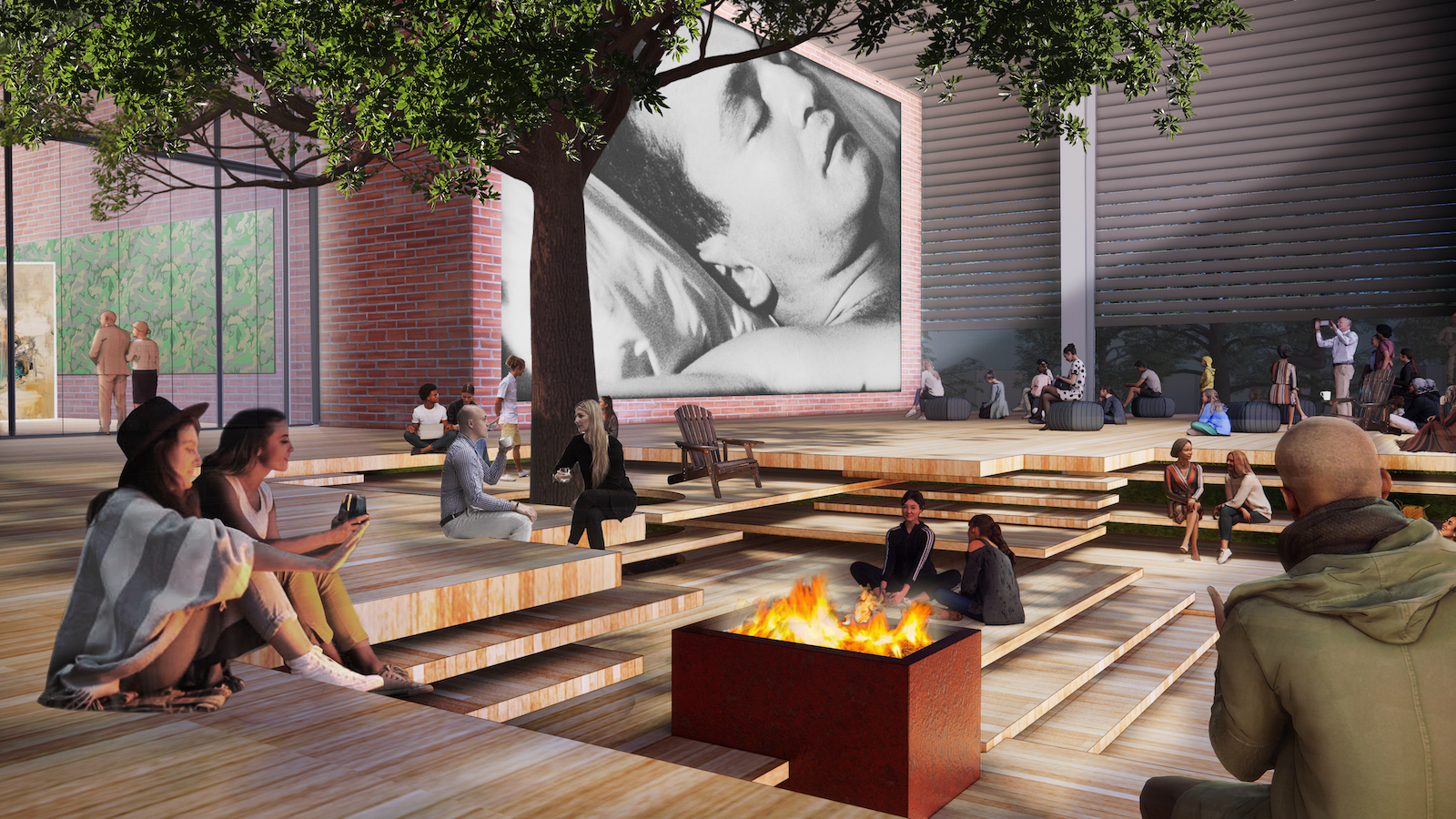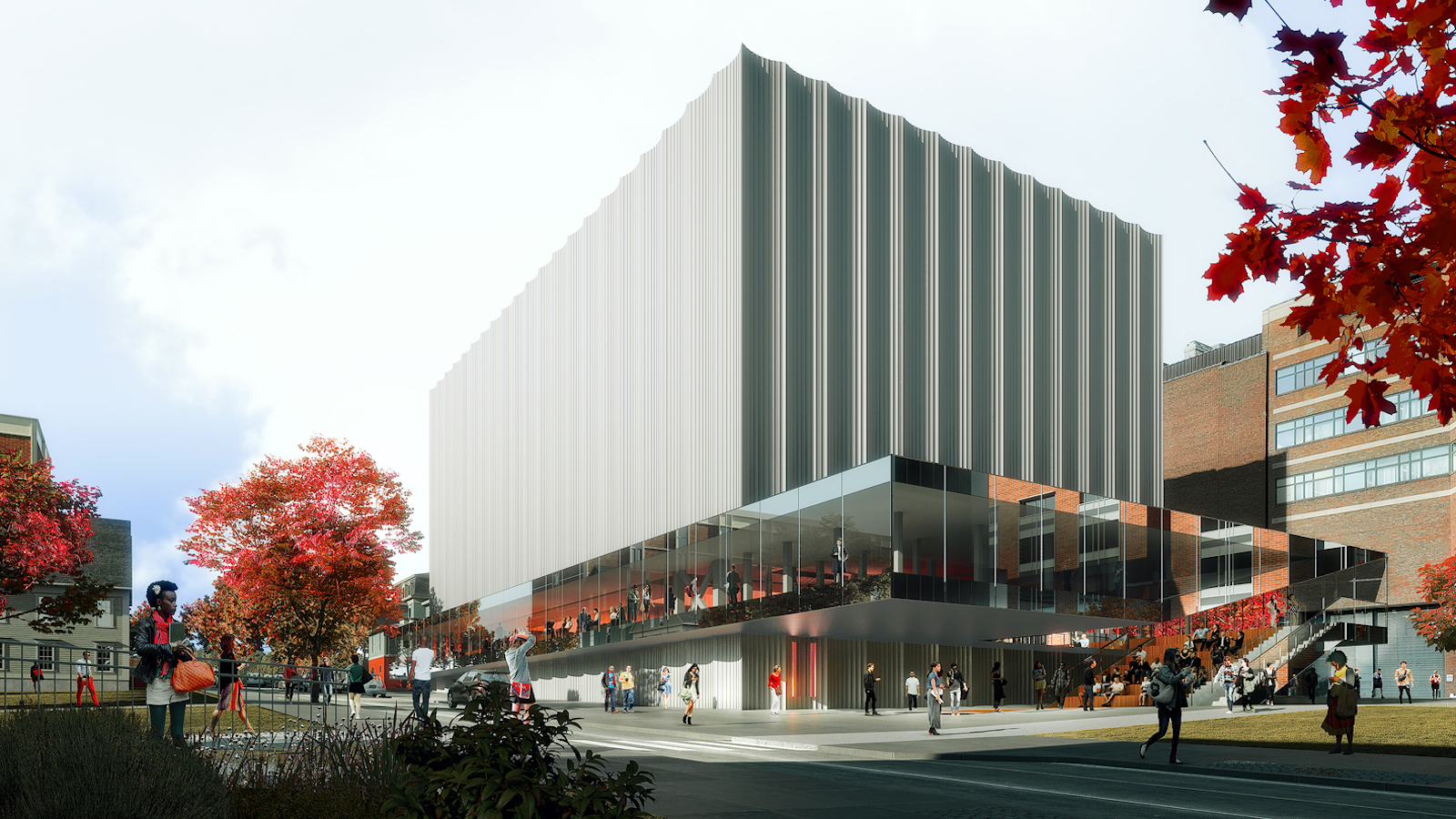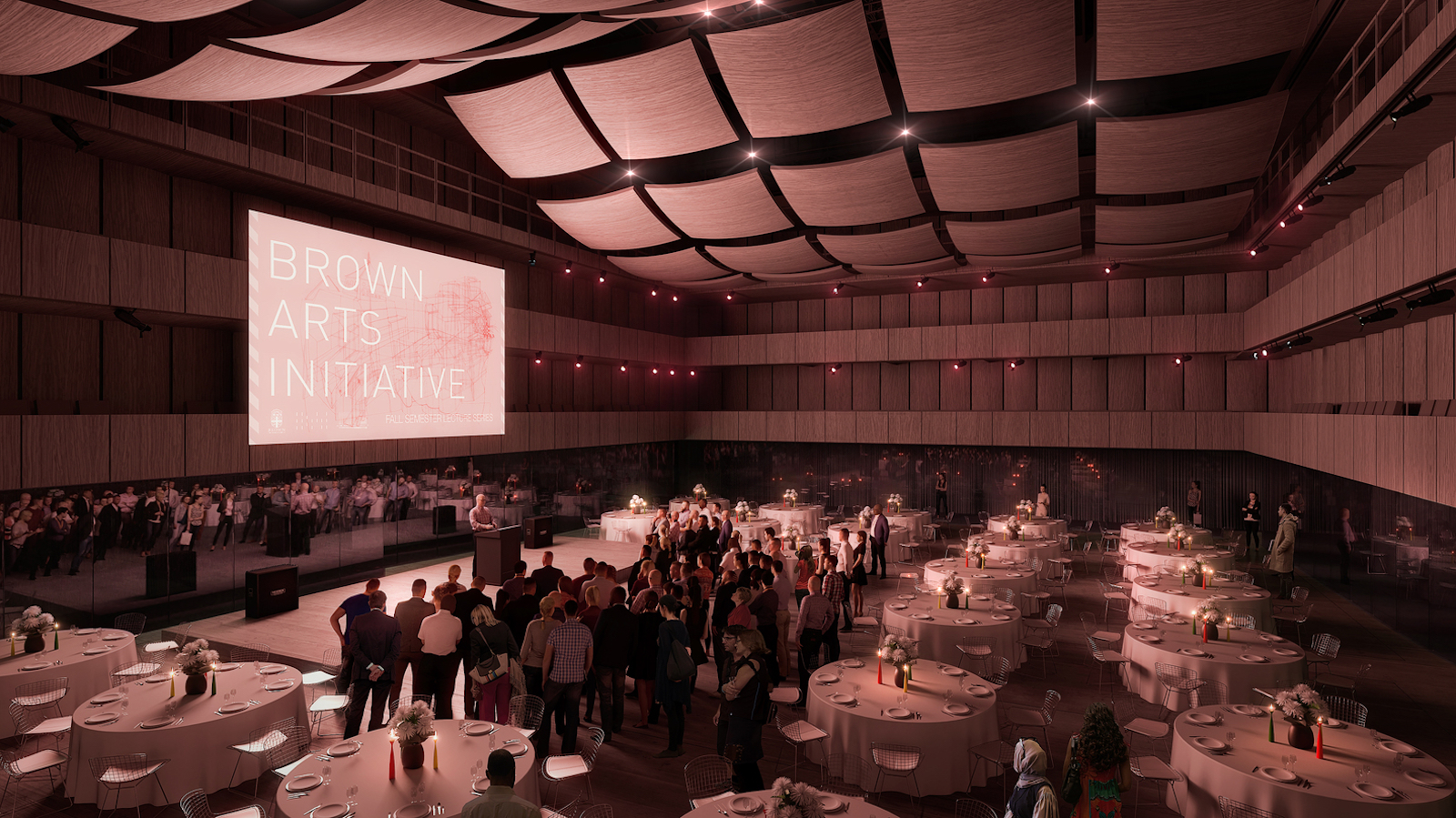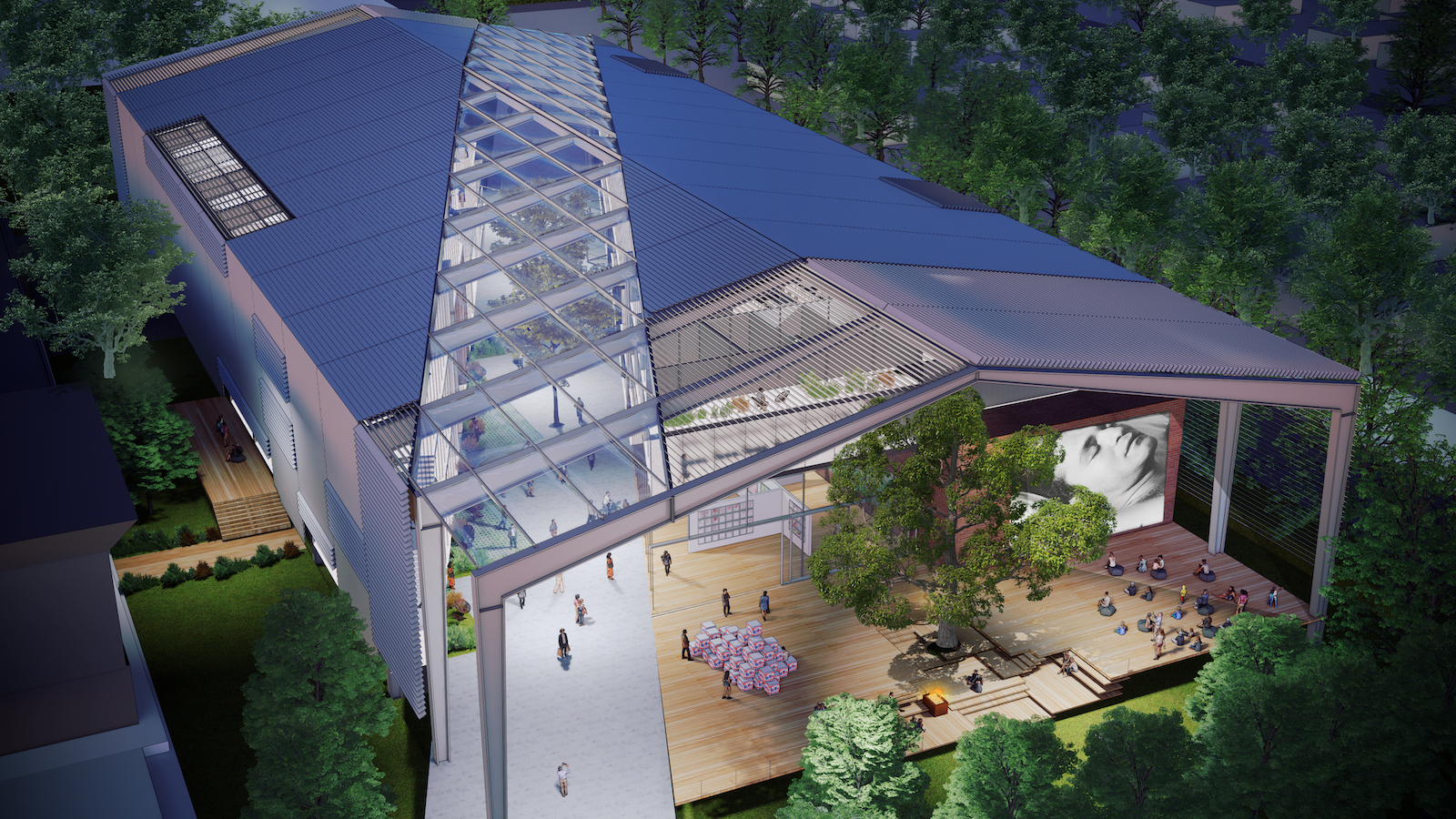A decade or so ago, Voith & Mactavish Architects was doing a lot of performing arts center design for independent secondary and prep schools. “In some ways, higher ed is now catching up” with the expectations of students, explains Daniela Voith, VMA’s Founding Partner and Director of Design, about cultural-related projects her firm has done for universities and colleges lately.
One recent example was the $60 million, 84,000-sf John and Joan Mullen Center for the Performing Arts at Villanova University in Pennsylvania. The LEED Silver-certified building, which was completed in the spring of 2020, is part of a major capital campaign to redevelop the campus’s southern area. The center features two theaters, with 400 and 200 seats respectively, and a 75-seat performance lab. VMA collaborated with Robert A.M. Stern Architects on the art center’s design. Bala Engineering, O’Donnell & Naccarato, and Nave Newell were the project’s engineers, and LF Driscoll provided construction management. The General Building Contractors Association bestowed its 2020 Best Cultural Institution Project Award on this arts center.

Voith isn’t alone in her belief that there’s a renewed recognition among universities that art and creativity “are part and parcel with what makes America succeed.” She also thinks that new and renovated arts centers can be weapons in the “arms race” being waged by universities and colleges that are raising their facilities and amenities to state-of-the-art levels to lure and retain students and faculty.
It might also be a coincidence, but several high-profile arts-related projects are in various stages of development or completion at a time when college enrollment in the U.S. in 2021 dropped for the second straight year, according to recent data from the National Student Clearinghouse Research Center, which estimates that enrollment was down 6.5 percent from pre-pandemic levels.
Integrating Arts And Education in Higher Education

In December, Princeton University in New Jersey—which, in truth, has no trouble attracting student applicants—started construction on its new Art Museum, which at 144,000 sf doubles the size of the museum it is replacing. Designed by Adjaye Associates in collaboration with Cooper Robertson, the three-story Princeton University Art Museum will be a grid of nine pavilions showcasing selections from the museum’s expansive and growing collection, which numbers more than 112,000 items. The building will also house Princeton’s Department of Art and Archeology, and Marquand Library. James Corner Field Operations is the project’s landscape architect, and LF Driscoll provided pre-construction services. The museum is scheduled for completion in 2024. In the interim, the museum will operate two gallery spaces in downtown Princeton, and is planning two outdoor exhibit spaces.
That same month, on December 10, a building team led by the construction management firm Shawmut Design and Construction and the architecture firm REX, celebrated a virtual topping off of Brown University’s 94,000-sf Performing Arts Center, which is scheduled for completion in the spring of 2023, and is utilizing integrated project delivery that incorporates subcontractors and the university into all phases of the project.
The vision for this PAC supports Brown’s 10-year strategic plan, Building on Distinction: A New Plan for Brown (2013), which commits the university to integrative scholarship, educational leadership, academic excellence, and campus development. “Brown is committed to the full integration of the arts into a complete liberal arts education,” the university states on its website. “We know that addressing some of the world’s most vexing challenges benefits from the creative problem-solving enabled by people who have studied and experienced the arts.”
The performing arts center will anchor a future arts district on Brown’s campus in Providence, R.I. Its main performance hall will feature five radically different preset spatial, acoustic, and technical configurations, from a 625-seat symphony orchestra to a 250-seat proscenium theater; as well as three smaller performance and rehearsal spaces below street level where students and faculty can create art works collaboratively. The building’s exterior aluminum rainscreen will appear to shift in color and pattern with time-of-day and seasonal changes.
The performing arts center project is anticipated to achieve a minimum of LEED silver certification. (Brown’s stated policy is not to release cost information until a project is completed.)
Recalling the Past, Without the Obsolescence

Another arts education project that’s drawn attention is Diller Scofidio + Renfro’s (DS+R) design for the Susan and Fayez Sarofim Hall, a $25 million, 50,000-sf building for visual and dramatic arts students, situated on the Houston campus of Rice University. Sarofim Hall, which is scheduled to break ground this year and be completed in 2024, will add to Rice’s already vibrant cultural district that includes the Moody Center for the Arts (which opened in 2017), the newly constructed Brockman Hall for Opera, and Shepherd School of Music’s Alice Pratt Brown Hall.
Rice’s Visual and Dramatic Arts department is one of the university’s most popular, with 900 students per year.
“Cross-disciplinary discourse is a hallmark of the arts in the 21st century, but it has been difficult at Rice since its facilities are scattered all over campus,” observes Charles Renfro, a Partner at DS+R and a Rice graduate. “Sarofim Hall will not only bring these programs together for the first time, but also facilitate experimentation and collaboration between disciplines through open, transparent, indoor/outdoor and public-facing space.”
DS+R’s design recalls the campus’s now-defunct Art Barn and Rice Media Center, which date back to the late 1960s, and the mass-produced pre-engineered metal structures that were popular after World War II. (Art Barn, which was officially known as the Institute for the Arts, was torn down in 2014, and The Media Center is being razed to make way for Sarofim Hall.)
The prefabricated Sarofim Hall will incorporate exhibition areas, labs, studios, shops, faculty offices, and other collaborative spaces for artists across all media. The building’s design frees the steel frame from its skin, and blurs the boundaries between maker and exhibition spaces.
The studios and facilities are designed to guard against obsolescence by encouraging students to fashion their work areas according to their artistic needs. “The building shell is thought of as a piece of infrastructure: simple, durable, and timeless, while the insides can transform as needs change,” Renfro is quoted as saying.
Sarofim Hall’s distinguishing characteristics include Art Street, a glass-lined walkway that cuts diagonally through the four-story building and will serve as a new entrance to the university; and West Porch, a covered outdoor area for such programming as classes, exhibits, and film screenings.
“DS+R’s initial concept for the new building cleverly weaves the symbolism of that history with the scale, materiality, and ‘porosity ’of the broader campus fabric,” adds University Architect George Ristow. “With the building being at the outward-facing perimeter—and at an entrance into campus that has evolved into one of the most active and dynamic access points—it will undoubtedly have a different kind of visibility beyond the hedges that will be leveraged as a new and unique gateway to the Rice arts corridor.”
The project team for Sarofim Hall includes Jackson & Ryan Architects (executive architect), OJB Landscape Architecture (LA), Fisher Dachs Associates (theater consultant), Threshold (acoustics/AV), Martinez Moore (SE), Walter P Moore (CE), and Wylie Associates (MEP). The university did not identify the project’s construction manager or general contractor.
Related Stories
| Aug 11, 2010
Gold Award: Eisenhower Theater, Washington, D.C.
The Eisenhower Theater in the John F. Kennedy Center for the Performing Arts in Washington, D.C., opened in 1971. By the turn of the century, after three-plus decades of heavy use, the 1,142-seat box-within-a-box playhouse on the Potomac was starting to show its age. Poor lighting and tired, worn finishes created a gloomy atmosphere.
| Aug 11, 2010
Giants 300 University Report
University construction spending is 13% higher than a year ago—mostly for residence halls and infrastructure on public campuses—and is expected to slip less than 5% over the next two years. However, the value of starts dropped about 10% in recent months and will not return to the 2007–08 peak for about two years.
| Aug 11, 2010
Reaching For the Stars
The famed Griffith Observatory, located in the heart of the Hollywood hills, receives close to two million visitors every year and has appeared in such films as the classic “Rebel Without a Cause” and the not-so-classic “Charlie's Angels: Full Throttle.” Complete with a solar telescope and a 12-inch refracting telescope, multiple scientific exhibits, and one of the world...
| Aug 11, 2010
The Art of Reconstruction
The Old Patent Office Building in Washington, D.C., completed in 1867, houses two Smithsonian Institution museums—the National Portrait Gallery and the American Art Museum. Collections include portraits of all U.S. presidents, along with paintings, sculptures, prints, and drawings of numerous historic figures from American history, and the works of more than 7,000 American artists.
| Aug 11, 2010
Silver Award: Pere Marquette Depot Bay City, Mich.
For 38 years, the Pere Marquette Depot sat boarded up, broken down, and fire damaged. The Prairie-style building, with its distinctive orange iron-brick walls, was once the elegant Bay City, Mich., train station. The facility, which opened in 1904, served the Flint and Pere Marquette Railroad Company when the area was the epicenter of lumber processing for the shipbuilding and kit homebuilding ...
| Aug 11, 2010
Bowing to Tradition
As the home to Harvard's Hasty Pudding Theatricals—the oldest theatrical company in the nation—12 Holyoke Street had its share of opening nights. In April 2002, however, the Faculty of Arts and Sciences decided the 1888 Georgian Revival building no longer met the needs of the company and hired Boston-based architect Leers Weinzapfel Associates to design a more contemporary facility.
| Aug 11, 2010
Silver Award: Please Touch Museum at Memorial Hall Philadelphia, Pa.
Built in 1875 to serve as the art gallery for the Centennial International Exhibition in Fairmount Park, Memorial Hall stands as one of the great civic structures in Philadelphia. The neoclassical building, designed by Fairmount Park Commission engineer Hermann J. Schwarzmann, was one of the first buildings in America to be designed according to the principles of the Beaux Arts movement.
| Aug 11, 2010
Financial Wizardry Builds a Community
At 69 square miles, Vineland is New Jersey's largest city, at least in geographic area, and it has a rich history. It was established in 1861 as a planned community (well before there were such things) by the utopian Charles Landis. It was in Vineland that Dr. Thomas Welch found a way to preserve grape juice without fermenting it, creating a wine substitute for church use (the town was dry).
| Aug 11, 2010
Team Tames Impossible Site
Rensselaer Polytechnic Institute, the nation's oldest technology university, has long prided itself on its state-of-the-art design and engineering curriculum. Several years ago, to call attention to its equally estimable media and performing arts programs, RPI commissioned British architect Sir Nicholas Grimshaw to design the Curtis R.
| Aug 11, 2010
Silver Award: Hanna Theatre, Cleveland, Ohio
Between February 1921 and November 1922 five theaters opened along a short stretch of Euclid Avenue in downtown Cleveland, all of them presenting silent movies, legitimate theater, and vaudeville. During the Great Depression, several of the theaters in the unofficial “Playhouse Square” converted to movie theaters, but they all fell into a death spiral after World War II.







